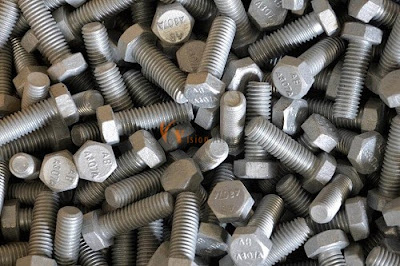Stainless Steel Fasteners
Stainless Steel Fasteners: The Key to Sustainable and Eco-Friendly Construction
In today's world, sustainability and eco-friendliness have become crucial considerations in various industries, including construction. As we strive to build a greener future, it is essential to choose materials and products that align with these principles. Stainless steel fasteners are an excellent example of such products that can significantly contribute to sustainable and eco-friendly construction practices. In this article, we will explore the reasons why stainless steel fasteners are the key to sustainability in the construction industry.
Durability and Longevity
One of the primary reasons stainless steel fasteners are preferred in construction is their exceptional durability and longevity. Stainless steel is highly resistant to corrosion, rust, and weathering, making it ideal for outdoor applications and structures exposed to moisture. By using stainless steel fasteners, builders can ensure construction longevity, reducing frequent repairs and replacements. This durability factor saves resources and minimizes waste, contributing to sustainable construction practices.
Recyclability and Reusability
Stainless steel fasteners are known for their recyclability and reusability, making them a sustainable choice for construction projects. Stainless steel is made from a combination of iron, chromium, and other elements, which can be recycled without losing quality or performance. This means that stainless steel fasteners can be melted down and transformed into new products, reducing virgin materials and minimizing waste generation. Additionally, stainless steel fasteners can be easily removed and reused in different projects, further extending their lifespan and reducing environmental impact.
Energy Efficiency
Another significant advantage of stainless steel fasteners in sustainable construction is energy efficiency. Stainless steel has excellent thermal conductivity properties, transferring heat efficiently. This characteristic is particularly important in buildings, where energy consumption for heating and cooling can be significant. By using stainless steel fasteners in insulation systems or facade elements, builders can improve energy efficiency. This will reduce artificial heating or cooling, and minimize the overall carbon footprint of the structure.
Low Maintenance and Reduced Environmental Impact
Stainless steel fasteners require minimal maintenance, which contributes to their eco-friendly nature. Unlike other materials that require regular treatments or coatings to prevent corrosion, stainless steel is inherently resistant to rust. It does not need extensive upkeep. This low-maintenance aspect translates into fewer chemicals used, reducing environmental impact. Furthermore, stainless steel fasteners have fewer replacements over time, reducing waste and resource consumption.
Health and Safety Considerations
The use of stainless steel fasteners also aligns with health and safety considerations in the construction industry. Stainless steel is a non-toxic material that does not release harmful chemicals or pollutants into the environment. This makes it a safe choice for both construction workers and future occupants of the building. Additionally, stainless steel fasteners have excellent strength and reliability, ensuring construction structural integrity. By prioritizing stainless steel fasteners, builders can create safer and healthier environments for everyone involved.
Conclusion
As the construction industry evolves towards sustainable practices, A4-80 stainless steel fasteners have emerged as a key component in eco-friendly and sustainable construction. Their durability, recyclability, energy efficiency, low maintenance requirements, and positive health and safety attributes make 316 stainless steel fasteners an ideal choice for builders looking to minimize their environmental impact. By opting for Duplex 2205 fasteners, construction professionals can contribute to greener and more sustainable structures. This will help to shape a better future for generations to come.


.png)
Comments
Post a Comment